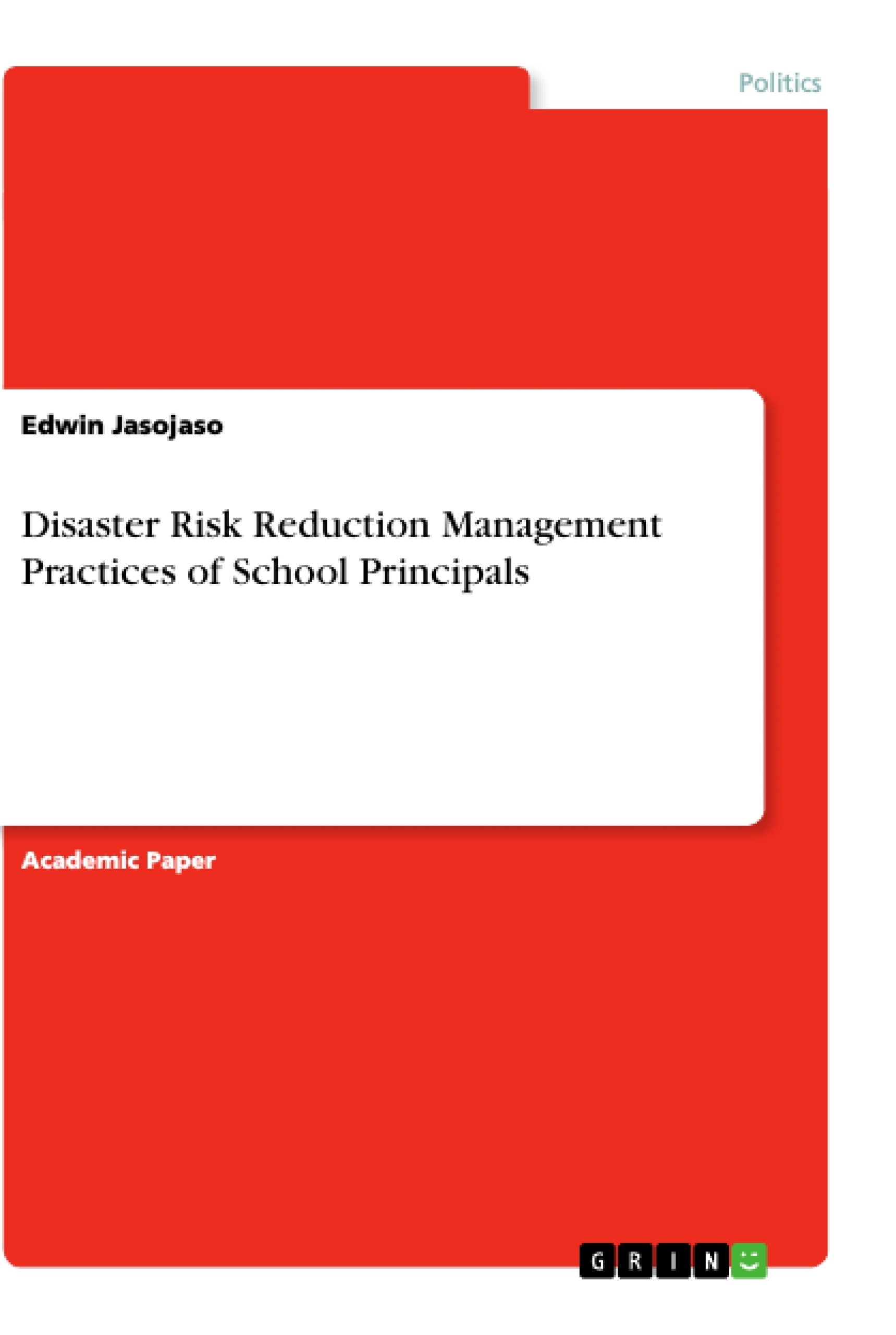This study determined the level of DRRM practices of school principals in the ten (10) public elementary school of the fifth district of the division of city schools manila for SY 2019-2020. The study with the title "Disaster Risk Reduction Management Practices of School Principals: Towards School Based Policy Guidelines" is especially designed to meet the requirements of the ever-changing needs of the schools in managing disaster.
The prevailing situations our nation is facing nowadays is the compelling reason why this study came into existence. Children, most especially in elementary schools are the ones to benefit if practices in DRRM are presented firmly and effectively. As provided by RA 10121 or the Philippine DRRM act of 2010, the concern agencies must deliver or provide a proactive approach in addressing risk in disaster, wherein its main focus is to prepare locals from imminent risk during disaster. It also stipulated the need of integrating DRR to school curricula in all levels and areas.
The results and recommendations of this study, though it is everybody’s concern, is pointing to the school principals that they should carry the burden on addressing the need of properly practiced DRR management to create a safe learning environment.
Inhaltsverzeichnis (Table of Contents)
- Introduction
- Theoritical Considerations
- Methods
- Results
- Statistical Analysis
- Overall DRRM Practices
- Demographical Variables
- DRRM Practices of School Principals
- Significant Difference as Grouped According to Profile
- Data Analysis
- Experiences Encountered in Handling DRRM practices
- Challenges Encountered in Dealing with DRRM practices
- Recommendations Suggested in Handling DRRM practices
- Conclusions and Recommendations
- Reference Cited
- Acknowledgement
Zielsetzung und Themenschwerpunkte (Objectives and Key Themes)
This study aims to evaluate the effectiveness of Disaster Risk Reduction Management (DRRM) practices employed by school principals in the fifth district of Manila's city school division during the academic year 2019-2020. The study explores the extent to which these practices are implemented, focusing on the impact of DRRM on school safety and preparedness.
- Assessment of DRRM practices in elementary schools.
- Analysis of the effectiveness of DRRM practices in creating safe learning environments.
- Examination of the role of school principals in DRRM implementation.
- Evaluation of the influence of demographic factors on DRRM practices.
- Identification of challenges and opportunities for improving DRRM practices.
Zusammenfassung der Kapitel (Chapter Summaries)
- Introduction: This chapter emphasizes the importance of disaster preparedness, particularly in schools, and highlights the crucial role of school principals in ensuring safety and effective DRRM practices.
- Theoritical Considerations: This chapter introduces the Chaos Theory, explaining its relevance to DRRM. The theory suggests that small changes in DRRM practices can have significant and unforeseen consequences.
- Methods: This chapter details the research methodology employed in the study, combining both quantitative and qualitative approaches. The study utilizes descriptive surveys, focused group discussions, and phenomenological analysis to gather data.
- Results: This chapter presents the findings of the study, examining the demographic characteristics of the respondents and their perspectives on DRRM practices.
- Data Analysis: This chapter provides further analysis of the collected data, exploring the experiences, challenges, and recommendations related to DRRM practices in the schools.
Schlüsselwörter (Keywords)
This research focuses on key concepts such as Disaster Risk Reduction (DRR), Management Practices, Policy Guidelines, School Safety, and the role of school principals in promoting effective DRRM strategies.
- Quote paper
- Edwin Jasojaso (Author), 2029, Disaster Risk Reduction Management Practices of School Principals, Munich, GRIN Verlag, https://www.grin.com/document/537349



